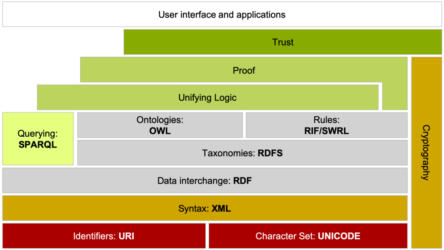Is Blockchain the Key to Web 3.0?
Web 3.0 has been around as a meme since early in the century. This writer was formerly with the Sun Microsystems Education business and recalls meetings we sponsored over a decade ago, that were attended by academic computer scientists promoting the concept.
And yet it has been slow to take off, and it remains a somewhat fuzzy catch-all concept. So much so that there is no Wikipedia entry! Some people claim Wikipedia has deliberately censored the term “Web 3.0”.
Wikipedia does have a section within the Semantic Web article. And this notes: “Web 3.0 has started to emerge as a movement away from the centralization of services like search, social media and chat applications that are dependent on a single organization to function.”
To my ear, this matches the desires of many in the cryptocurrency community for decentralized services built on blockchain that challenge the centralization of Facebook and others.
Web 3.0 was initially discussed in conjunction with Semantic Web and with agents. John Markoff of the New York Times supposedly coined the phrase.
Tim Berners-Lee has promoted the Semantic Web, where context and meaning are attached to data, and data structures have rich linkages in support of better data integration.
Cambridge Analytica has famously exploited these kinds of linkages in the Facebook environment to influence the U.S. presidential election and the Brexit referendum.
The general idea around Web 3.0 has been the semantic web, along with data mining, AI, and natural language providing a more productive web environment for users, with greater inferencing and intelligence.
Here’s a very simple view of how it relates to Web 1.0 and 2.0:
Web 1.0: Read-oriented, static
Web 2.0: Read and write, dynamic, interactive
Web 3.0: Read and write and execute, composite services, integration, meaning and agency, and greater decentralization
Now we see that blockchain and cryptocurrency are beginning to have an impact on the definition of Web 3.0.
Why? Well let us consider some major issues:
- Net neutrality is dead in the U.S. thanks to the state-corporatist position of the FCC
- The web is increasingly centralized on platforms such as Facebook, Google, Twitter who derive almost all of the financial benefit from data that users provide
- Cryptocurrencies and blockchain are proving that decentralization can work in a secure fashion, at least for some significant applications
Cryptocurrencies and blockchains provide the opportunity to restore the Web toward its original vision of a decentralized resource. They provide the opportunity to return control and monetization of data to users, instead of it being concentrated in relatively few large corporations.

Note that the Semantic Web stack shown at right includes trust, proof, and cryptography as major attributes. Well blockchains and cryptocurrencies are built on cryptography and are all about distributed trust. (Sometimes they are called ‘trustless’ but in fact trust resides in the protocols and in the network of blockchain miners, and the developer and user communities more generally).
You can find a presentation here by Ben Gardner on Semantic Blockchains:
https://www.slideshare.net/bengardner135/semantic-blockchain
Blockchains add trust and proof of work to the Semantic Web’s unambiguous data with connections. Ricardian contracts or smart contracts can be implemented.
The Semantic Web template is linked data plus directed graphs built with RDF triples.
And, I ran across this interesting paper:
“A more pragmatic Web 3.0: Linked Blockchain Data”, Hector E. Ugarte R., 2017. https://semanticblocks.files.wordpress.com/2017/03/linked_blockchain_paper_final.pdf
The author writes “Linked Data is proclaimed as the Semantic Web done right…an incomplete dream so far, but a homogeneous revolutionary platform as a network of Blockchains could be the solution..designed to interconnect data and meaning, thus allow (sic) reasoning.”
The Semantic Web is all about linked data with defined attributes and relationships, e.g. graph structures such as with RDF triples as the data model. One can adapt blockchains, including linked blockchains, to this purpose and add smart contracts to provide reasoning.
A Semantic Blockchain is defined in his paper as “the use of Semantic web standards on Blockchain-based systems. The standards promote common data formats and exchange protocols on the Blockchain…Semantic Blockchain is the representation of data stored on the distributed ledger using Linked Data.”
More broadly, Blockchains allow the ability to build a new Web from the ground up, with name services more fully decentralized and file and compute services layered on top. Identity and services can also be fully decentralized. Security is inherently provided by the blockchain’s peer-to-peer decentralized mechanism.
We believe that blockchain and cryptocurrencies will accelerate the development of Web 3.0 while also helping to refine its definition.
Stephen Perrenod has lived and worked in Asia, the US, and Europe and possesses business experience across all major geographies in the Asia-Pacific region. He specializes in corporate strategy for market expansion, and cryptocurrency/blockchain on a deep foundation of high performance computing (HPC), cloud computing and big data. He is a prolific blogger and author of a book on cosmology.

